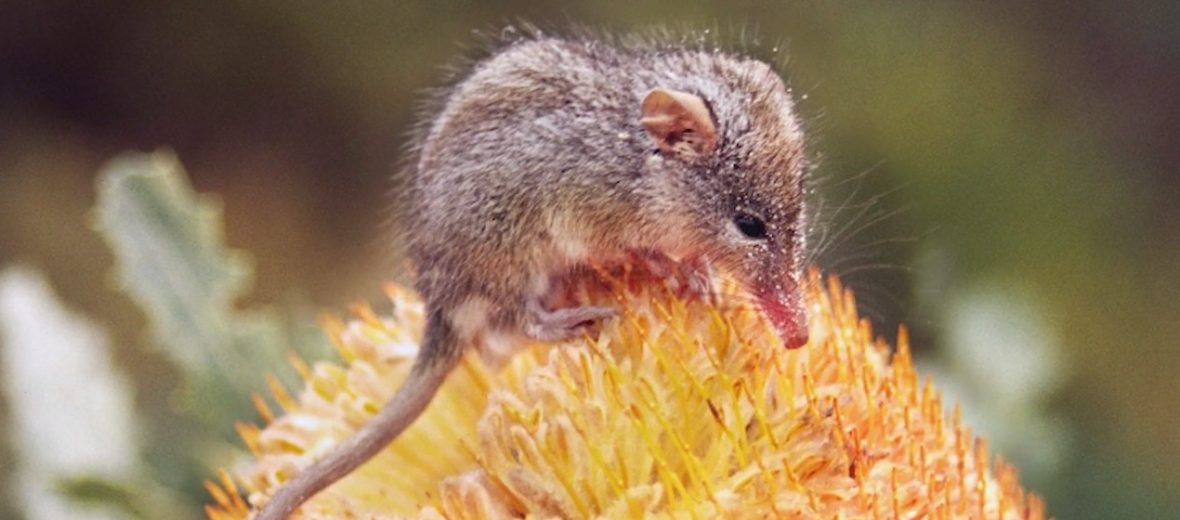
The honey possum, aka noolbenger or tait, hails from western Australia. They prefer coastal, sand plain heathlands and banksia woodlands with a large variety of flowering plants. The honey possum is among the world’s smallest marsupials, with the long-tailed planigale being number 1. Even though they suffer at the hands of wildfires, fire suppression, and habitat loss, these cute little critters are still listed as Least Concern by the IUCN.
First the Stats…
Scientific name: Tarsipes rostratus
Weight: Up to .33 ounce
Length: Up to 3 inches, plus up to a 3.94 inch tail
Lifespan: Up to 2 years
Now on to the Facts!
1.) These little critters are social and form groups of up to 10+ individuals.
2.) They are typically nocturnal (active at night) and crepuscular (active at dawn and dusk). But they can exhibit diurnal (active during the day) habits as well.
3.) During the day, they tend to take shelter in tree hollows, abandoned bird nests, and rock crevices.
4.) If the weather gets too cold, they may hibernate.
5.) These diminutive creatures are, like all possums, marsupials. This means that they have a marsupium, or pouch that houses the female’s joeys, as they continue to develop.
But wait, there’s more on the honey possum!
6.) They feed on pollen and nectar of flowering plants. Their favorites are the genus Banksia. These flowering plants produce a lot of nectar and bloom year round.
7.) When birthing their young, females will tend to shy away from males to avoid further mating, while tending to her joeys.
Did you know…?
Honey possums consume up to .23 ounce of nectar a day! That is like a human drinking 50 liters of soda every day!
8.) These possums are polyandrous (1 female mates with 2 or more males).
9.) Females undergo up to a 28 day gestation (pregnancy) that yields up to 4 joeys.
10.) The joeys are independent in up to 11 weeks.
But wait, there’s still more on the honey possum!
11.) Contrary to their name, these creatures do not consume honey at all. They only eat nectar and pollen. Honey possums are among only a handful of mammals with this type of diet.
12.) They are actually only distantly related to possums.
13.) The honey possum bears the smallest known mammalian newborns in the world, with joeys measuring only the length of a grain of rice, and weighing only .00018 ounce!
14.) These critters travel up to 1,640 feet per night, in search of nectar and pollen.
15.) Red foxes, barn owls, and feral and domestic cats all prey on honey possums.
Now a Short Honey Possum Video!
Be sure to share & comment below! Also, check out the Critter Science YouTube channel. Videos added regularly!
Want to suggest a critter for me to write about? Let me know here.
Think you know a lot about critters? Try your hand at these fun, free quizzes:



